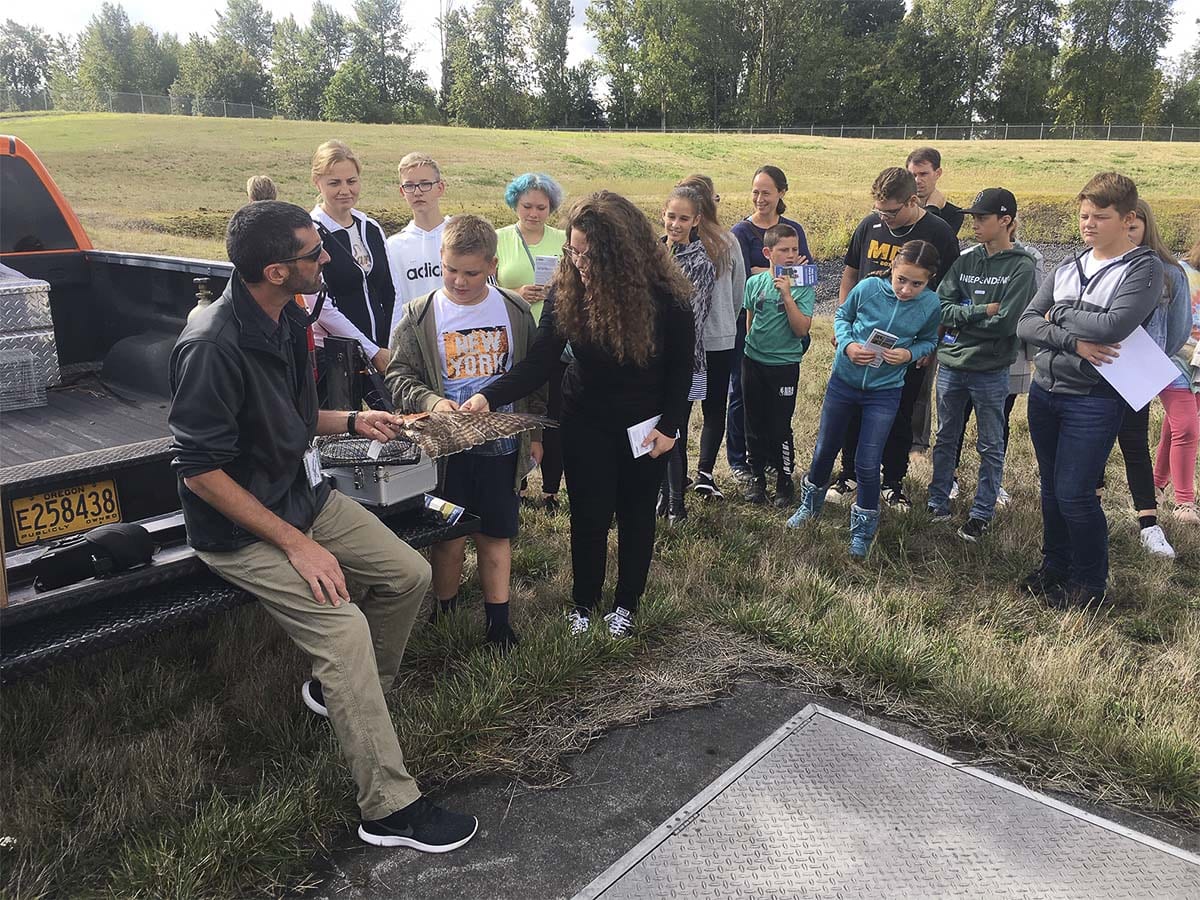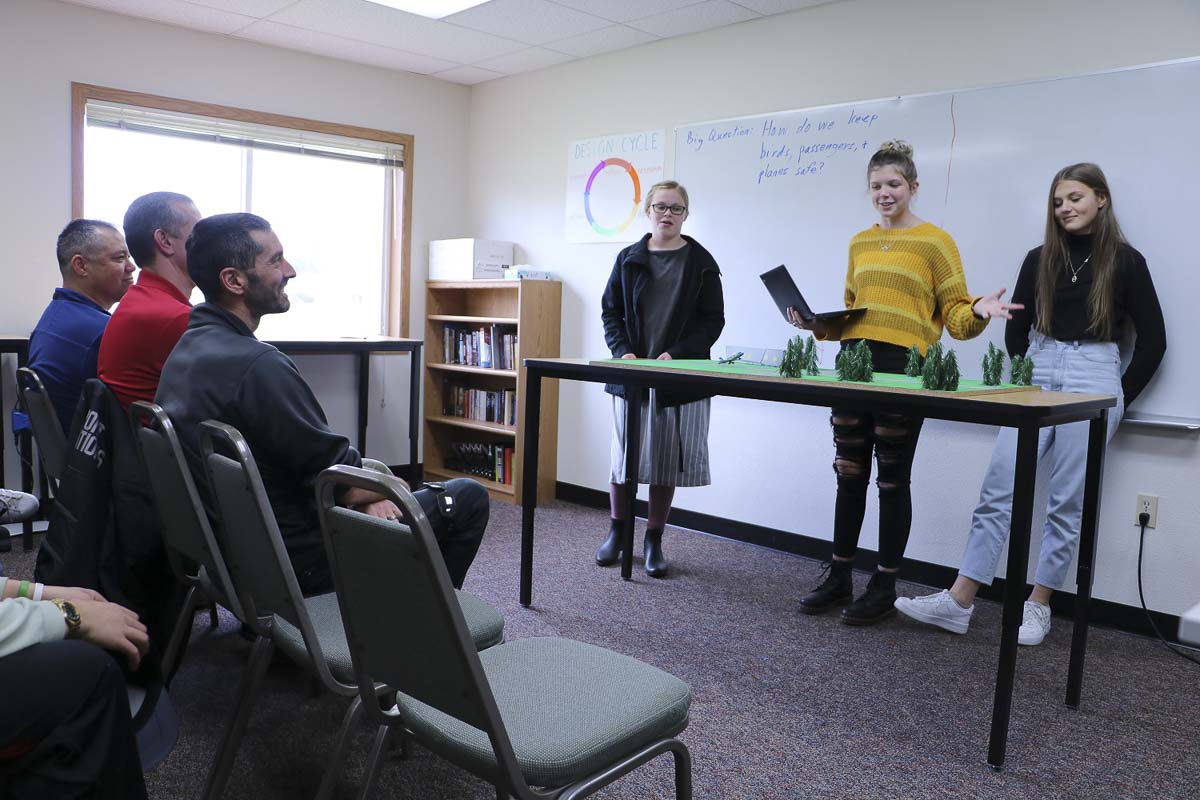River HomeLink students began their nine-week exploration of the bird strike problem by studying Flight 1549 and analyzing data about the prevalence of bird strikes nationwide
BATTLE GROUND — A group of 7th and 8th grade students at River HomeLink have been working since the beginning of the school year to help tackle a big question in the airline industry: how to keep the skies safe for passengers, planes and birds. The students are exploring solutions as part of teacher Kent Graham’s Problem-Based Learning (PBL) course, a class that has students working both online and in the classroom at River HomeLink, Battle Ground Public Schools’ parent-partnered homeschool.

The dangers of bird strikes are well documented. The most well-known example is US Airways Flight 1549, also known as “The Miracle on the Hudson.” On Jan. 15, 2009, US Airways Flight 1549 struck a flock of Canada geese shortly after taking off from New York’s LaGuardia Airport. The Airbus A320 consequently lost all engine power, and unable to reach any airports, pilot “Sully” Sullenberger made an emergency landing on the Hudson River. Tragedy was averted when all 155 people on board were rescued by boat.
River HomeLink students began their nine-week exploration of the bird strike problem by studying Flight 1549 and analyzing data about the prevalence of bird strikes nationwide. Next, the class took a field trip to Portland International Airport (PDX) to hear from multiple experts and learn about bird strikes from a variety of perspectives. The students met with PDX Airport Operations Manager Sterling Kesler, Horizon Airlines pilot Darin Chung, Port of Portland Environmental Specialist Nick Atwell, and several members of the Port’s operations, maintenance and fire and rescue teams. All of the experts stressed the importance of protecting local ecosystems and explained how technology has improved their practices in helping to make airports safer for both wildlife and airline passengers.
“Engaging with professionals who are working in the fields we’re studying in the classroom makes for a unique, authentic learning experience for students,” Graham said. “Seeing the work of experts up close and in person helps students connect conceptual learning with the real world.”
The Bird Strike Project materials are provided free, courtesy of Educurious Partners and meet Washington State learning standards for science. The problem-based learning curriculum is designed to reflect real-world challenges by incorporating real-world resources. It’s an approach that sparks interest, ignites possibility, and fuels a love for learning in students.
The bird strike project comprises four modules. In the first module, River HomeLink students were introduced to the project challenge and began to think about what they would need to know to accomplish the final task of keeping birds, airplanes, and humans safe from bird strikes. Students worked in pairs or small groups to analyze data from the National Wildlife Strike Database and determine how big of a problem bird strikes are locally and nationally.

Next, students focused on habitats. They studied food chains, food webs, trophic levels, and the cycling of matter and energy. Students assessed which habitat attractants invite birds into a given airspace. Students deepened their knowledge of ecosystems as they considered how habitat management can deter birds and prevent bird strikes.
In the third module, students were introduced to general wildlife management strategies and region-specific interventions for preventing bird strikes. At this stage, the students began to develop a Wildlife Hazard Management Planning Tool.
The final stage of the project wrapped up last week, as River HomeLink students showcased what they’ve learned by presenting to their peers and community members. Several experts from PDX visited the school on Friday, Oct. 25 to serve as panelists and ask questions of the students after they presented their findings and reflections.
“This project is a lot of work, but also a lot of fun for students,” Graham said. “The students respond very well to being challenged, and I have been impressed by the enthusiasm and initiative they’ve shown.”
River HomeLink serves students in kindergarten through grade 12. Students choose from a variety of educational options: taking one or more elective classes, ongoing homeschool assistance through regular meetings with school staff, and blended classroom/at-home learning. Online learning for students in grades 6-12 is also available. A high level of parent involvement is expected and required. Visit https://riv.battlegroundps.org/ for more information.
Information provided by Battle Ground Public Schools.




